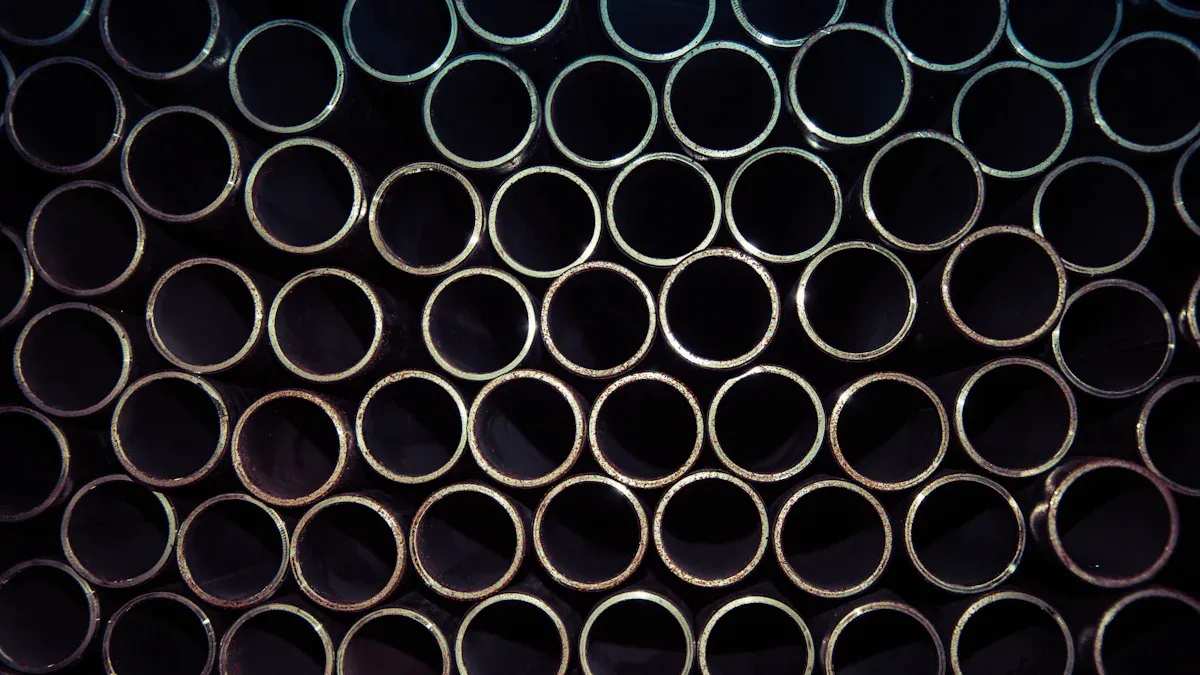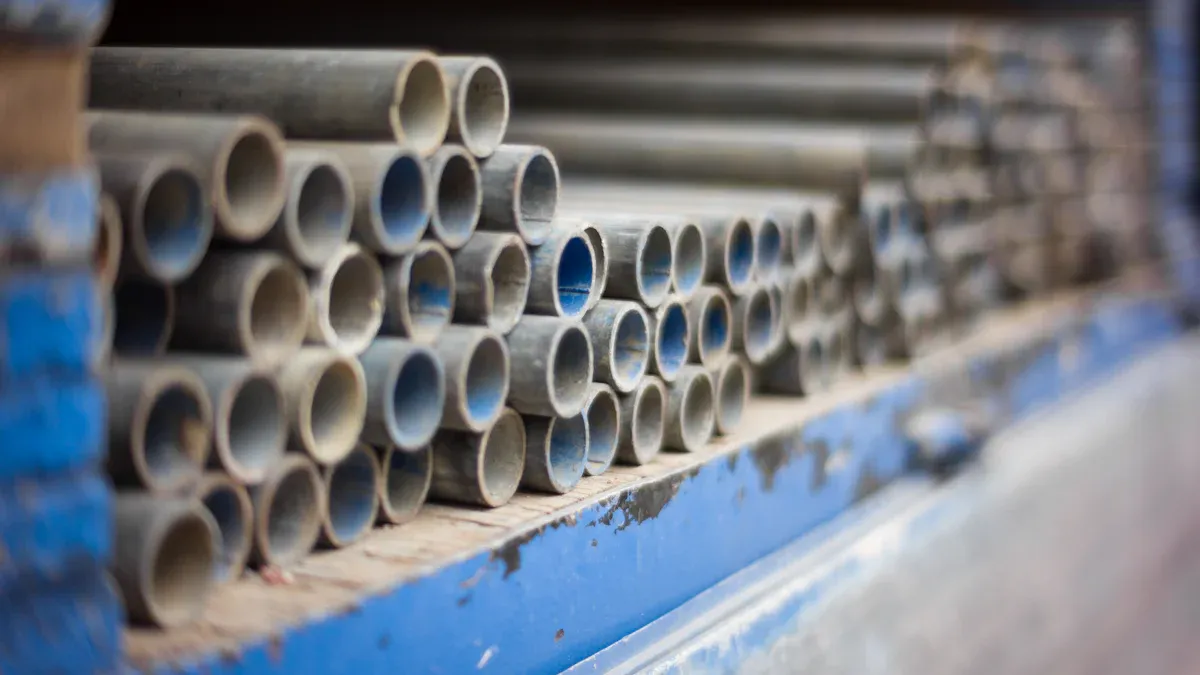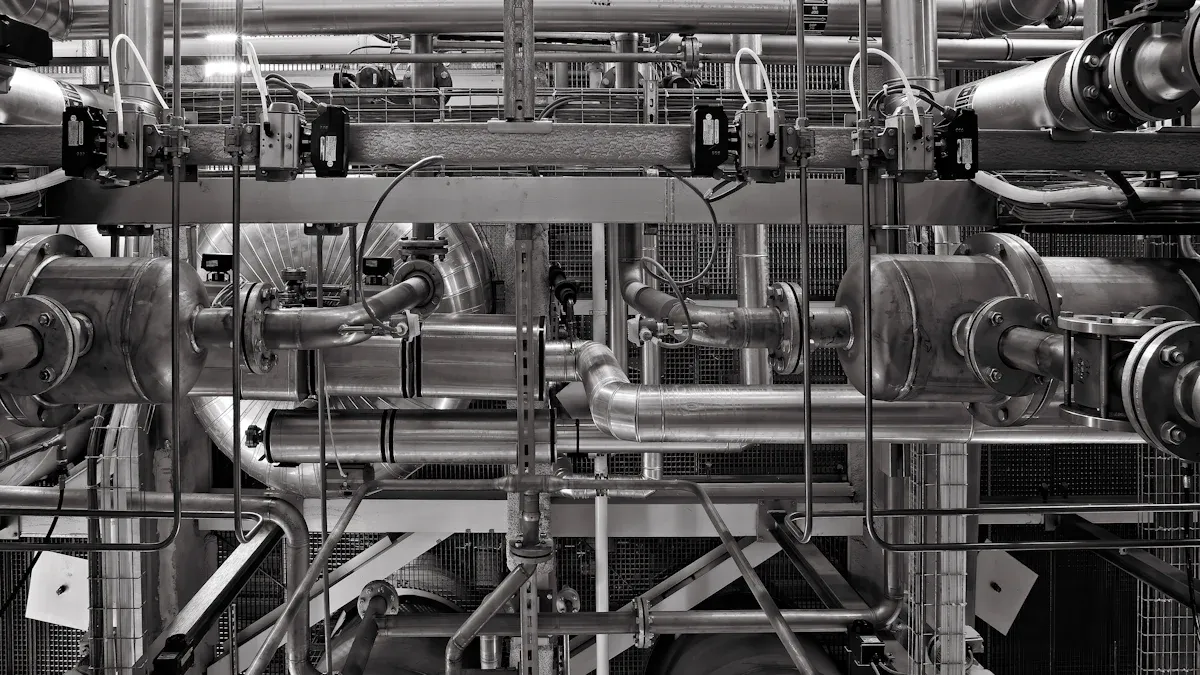What are the Key Steps in Nitinol Tubing Manufacturing

The Nitinol Tubing manufacturing process requires meticulous attention to detail to achieve its unique properties. It is essential to control the levels of oxygen and carbon to prevent the formation of hard spots. Specialized tools are employed to monitor the nickel and titanium content, ensuring it remains at 55-56% and 44-45%, respectively. This precise Nitinol Tubing manufacturing process guarantees that the tubing retains its flexibility and strength, making it suitable for both medical and industrial applications.
Key Takeaways
Making Nitinol tubes needs careful control of nickel and titanium.
Polishing and cleaning the surface is important for safety in medicine.
Testing checks size, strength, and features to meet standards.
Material Preparation in the Nitinol Tubing Manufacturing Process
Melting and Alloying Techniques
The first step is melting nickel and titanium together. This creates a strong alloy. Nickel must stay between 54.5% and 57%. This range is important for Nitinol's special features like flexibility and shape memory.
To keep the material clean, Vacuum Induction Melting (VIM) is used. This method stops unwanted particles from forming. It also keeps the material pure, which is important for medical use. During melting, oxygen and carbon levels must be controlled. Too much can cause hard spots that weaken the material.
Vacuum Arc Remelting (VAR) is often done after VIM. This step makes the alloy even better by removing more impurities. It also helps the material stay consistent. Special techniques like gas cooling improve the molten metal's flow. This ensures the material has the same strength throughout.
Casting and Ingot Formation
After the alloy is ready, it is poured into molds. This is done in a vacuum to avoid contamination. The molds create ingots that meet strict quality rules.
Both VIM and VAR help make high-quality ingots. VIM mixes the alloy evenly, which is important for strength. VAR further cleans the material and improves its structure. It also reduces impurities by creating a deeper molten pool.
The final ingots must follow ASTM F2063 standards. These rules ensure the material is chemically and physically correct. By controlling oxygen and carbon, titanium oxides and carbides are avoided. These impurities can make the material weaker and less useful.
Forming Processes for Nitinol Tubing

Gun Drilling for Hollow Tube Formation
Gun drilling is key to making hollow Nitinol tubes. It uses fast, special tools to cut hollow spaces in Nitinol bars. This step is important for making medical items like stents and catheters. Gun drilling ensures the walls of the tubes are even. Even walls help the devices work well and last longer.
To get good results, makers watch things like speed and coolant flow. These steps keep the size correct and stop mistakes. Also, controlling oxygen and carbon during drilling avoids weak spots. Careful work makes sure the tubing meets strict Nitinol standards.
Seamless Tubing Drawing and Extrusion
After drilling, the tubing is stretched and shaped into seamless tubes. This step makes the tubing stronger and more flexible. It helps the tubing work well in tough jobs.
Tests are done to check the tubing’s quality and safety. These tests follow ASTM and FDA rules. For example, ASTM says Nitinol must have 54.5% to 57% nickel. FDA rules make sure safe methods like VIM and VAR are used. These rules ensure the tubing stays strong and works as needed.
Standard | Requirement |
|---|---|
ASTM International | |
FDA Guidance | VIM and VAR methods meet FDA rules |
Heat Treatment and Property Optimization
Shape Setting and Annealing
Heat treatment is important in making Nitinol tubing. It improves special features like shape memory and flexibility. Shape setting heats Nitinol to 400°C-500°C. This locks the desired shape into the material. Strand annealing and salt baths are common methods for this.
Annealing involves heating and cooling the material carefully. This step reduces stress and improves strength. Proper heat treatment keeps the tubing strong and flexible. The heat treatment temperature affects the austenite finish temperature (Af). DSC curves show how the material changes at different temperatures. These tests help make the tubing work best for its purpose.
Evidence Type | Description |
|---|---|
DSC Curves | Show how heat treatment changes the material. |
Austenite Finish Temp. | Helps find the best heat treatment for shape memory. |
Precipitate Formation | Explains how heat affects material structure and strength. |
Superelasticity and Shape Memory Control
To make sure Nitinol tubing works well, tests are done. Tensile tests check strength and stretching ability. Bend Free Recovery (BFR) tests see if the tubing returns to its shape after bending. These tests show the tubing can handle stress without breaking.
Non-destructive tests like X-ray and ultrasound check the tubing's structure. DSC tests confirm the right transformation temperatures. These steps ensure the tubing meets standards. Controlling these features makes tubing great for medical and industrial uses.
Test Type | Purpose |
|---|---|
Tensile Testing | Checks how strong and stretchable the tubing is. |
Differential Scanning Calorimetry (DSC) | Confirms the material's temperature changes. |
Bend Free Recovery (BFR) Tests | Tests if the tubing returns to its shape after bending. |
Non-destructive Testing | Checks material and structure using X-ray and ultrasound. |
Surface Finishing in Nitinol Tubing Manufacturing

Polishing and Cleaning Processes
Polishing is very important in making Nitinol tubing. It creates a smooth surface, which is needed for medical tools. The process has steps like rough polishing, fine polishing, and buffing. Each step uses different tools to make the surface perfect.
Electropolishing is a common method to improve the surface. It makes the tubing smoother and safer for the body. This is important for medical tubing to avoid bad reactions. Clean Nitinol resists rust and releases less nickel. These features make it great for implants that stay in the body.
After polishing, cleaning removes any leftover dirt or particles. Final checks make sure the surface is perfect. Any flaws are fixed to keep the tubing safe and strong.
Oxide and Impurity Removal
Getting rid of oxides and impurities is very important. Electropolishing removes bumps and extra nickel from the surface. This lowers nickel release and stops blood clots from forming.
Vacuum Induction Melting (VIM) and Vacuum Arc Remelting (VAR) also help. VIM melts nickel and titanium in a vacuum to stop oxides. VAR melts the alloy again to clean it more. These methods make the tubing strong and good for medical use.
By using polishing and impurity removal, makers create strong and safe tubing. These steps ensure the tubing works well in important jobs.
Quality Control and Final Inspection
Dimensional Accuracy Testing
Checking the size of Nitinol tubing is very important. This step ensures the tubing has the correct size and shape. Tools like laser micrometers measure the tubing's diameter and thickness. Coordinate measuring machines (CMM) check its length and shape.
The tubing's size must match industry rules like ASTM F2063. Even small errors can cause problems, especially in medical tools like stents. Keeping the size accurate helps the tubing work perfectly for its job.
Mechanical and Functional Property Verification
After checking the size, the tubing's strength is tested. These tests make sure the tubing works well in real situations. Tensile tests check how strong and stretchy the tubing is. Fatigue tests see if it lasts after being used many times.
Other tests check the tubing's special features like shape memory. For example, they test if the tubing goes back to its shape after bending. X-rays or ultrasounds look for hidden problems without harming the tubing.
These tests make sure the tubing is safe and works well. This is very important for jobs like medical tools or airplanes where safety matters most.
The process of making Nitinol Tubing needs great care and skill. It has special features like shape memory and superelasticity. These make it perfect for advanced uses. Its role in medical tools grows as less invasive surgeries become popular.
Evidence Type | Details |
|---|---|
Material Properties | Nitinol has special traits like shape memory and superelasticity. |
Industry Trends | New technology and more demand for small surgeries drive the market. |
Market Growth | The heart stent market is growing, with Nitinol stents being a big part. |
This process shows smart ideas and careful work to make strong tubing for important jobs.
FAQ
What makes Nitinol tubing special?
Nitinol tubing can remember its shape and stretch easily. It goes back to its original form after being bent. This makes it great for medical tools and machines.
How is the tubing's quality checked?
Makers use careful tests to check the tubing. They measure its size, test its strength, and look for hidden problems. These steps make sure it works well and meets rules.
Why is surface finishing needed?
Surface finishing cleans and smooths the tubing. It makes it safe for the body, lowers nickel release, and helps it work well in medical tools like stents.
See Also
Understanding The Production Process Of Nitinol Tubing
A Comprehensive Guide To Nitinol Microtubing Production Steps
Essential Tips For Choosing The Right Nitinol Tubing
Complete Overview Of Nitinol Components And Their Production
Choosing The Ideal Nitinol Tubing Supplier For Your Requirements

